
So, back last November and early December, my friend Brian and I spent a few days in kayaks and my skiff, pulling clean spruce and cedar logs out of log jams on the Nehalem River. But how to get them out of the river and back to the shop, where we could mill them up?
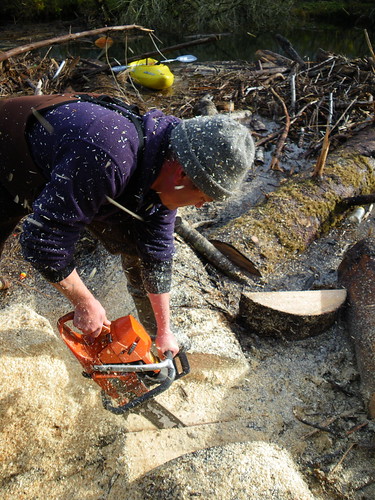 |
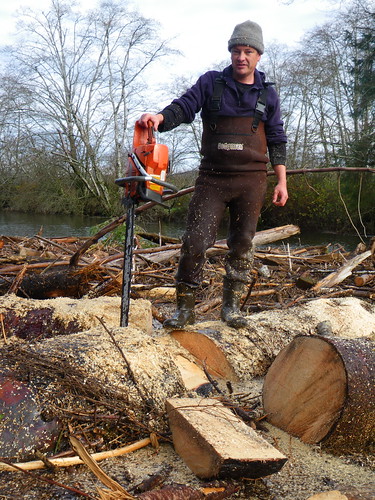 |
The nearest good boat ramp was over 3 miles downstream from where the logs were tied up, and Brian’s idea was to have a kayak race, where teams would each be assigned a log, and the first ones to get their log past the highway 101 bridge over the river would be the winner.
So, On February 7th, with a strong outgoing tide in the afternoon, a groups of kayakers converged on Brian’s shop in Nehalem and he laid out the plan. There were prizes offered, including a skin on frame kayak, a well used copy of “Kayaks of Greenland” and a quart of excellent beer.
Within an hour, all the kayakers were putting in at the upper boat ramp, having already shuttled a mess of cars to the dock in Nehalem. Andrew Elizaga came along in one of Brian’s adirondack guide boats and filmed the whole thing, his movie can be seen here on Youtube.
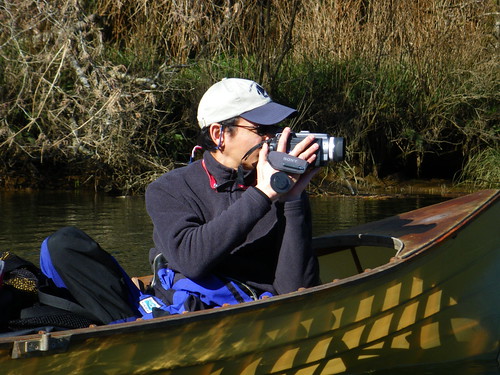
When we got to where our logs were tied up, we separated into teams and I started passing out logs as I untied the raft. Some people got enormous huge logs, some got smaller logs, and it was evident pretty quickly that a close competition was not going to be had, as those with lighter cedar logs quickly took the lead, and the team of three paddlers with the monster butt log struggled to stay with the group. Brian switched teams around a bit and he and I rotated around between the teams that had bigger logs, helping keep the group together.
 |
 |
We passed a motor boat and some folks out on their decks as we got closer to town and got some strange looks and odd comments here and there.
Finally everyone made it to the dock and we tied up the logs, and then paddled back upstream to Nehalem, pulled out on the dock in town and wandered over to have some pizza and beer. And that was the kayaking race.
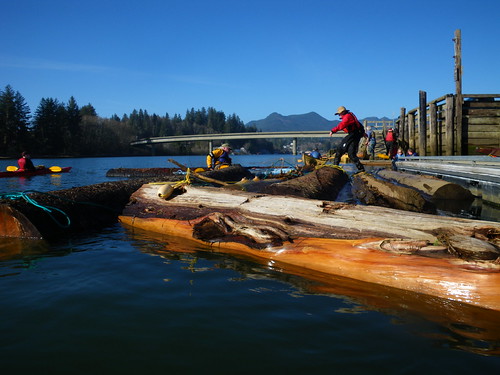
The next day I came back with the truck and a trailer and Brian and I spent the day loading the logs onto the trailer and taking them back to his shop, where we finally figured out how to unload them without getting stuck in the wet grass. This one was the biggest one, at eighteen feet long and 34″ in diameter at the small end. It was a one log load, scaled at 950 board feet on the Scribner scale and we guessed its weight at about 5,000 pounds.

There are still a few small logs tied up there, and once we have them pulled out and moved to the shop, I will move the mill down there and saw it all up into lumber, some of which will get built into kayaks, and some of which will get built into a new back porch to replace the one I lost to snow load on Christmas day. Stay tuned!

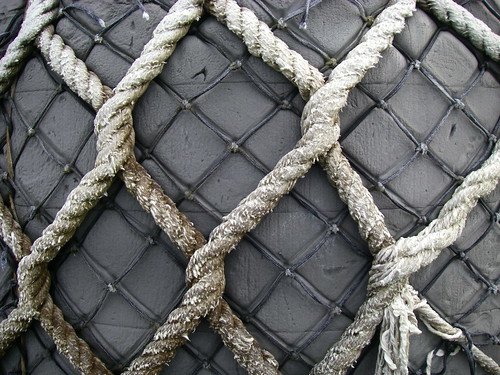

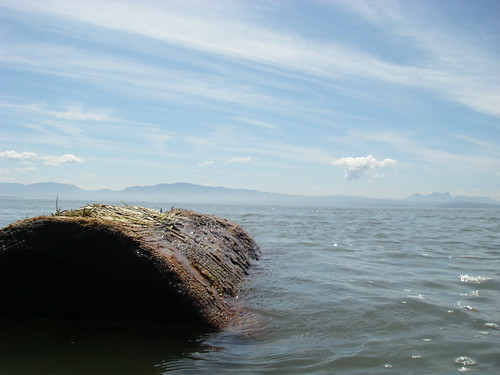
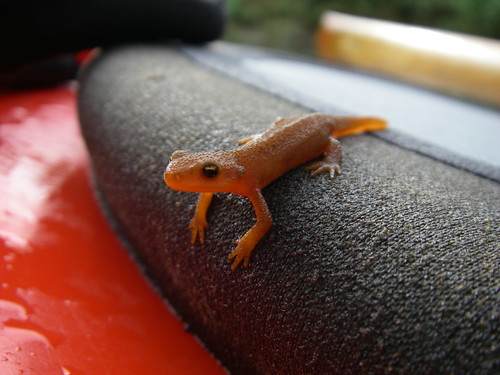
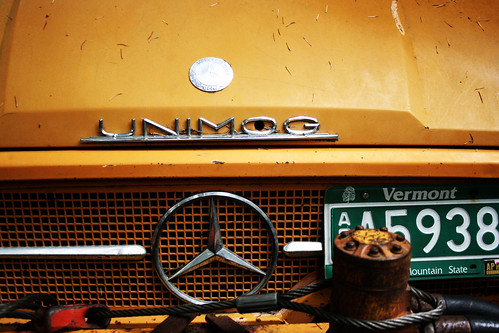
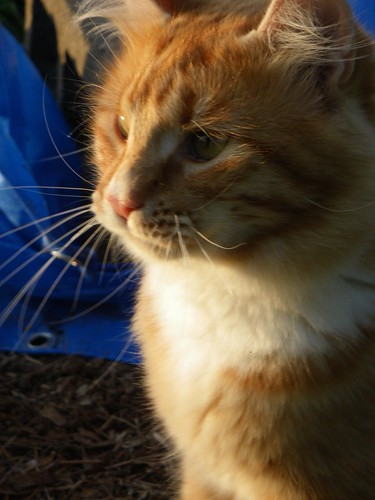
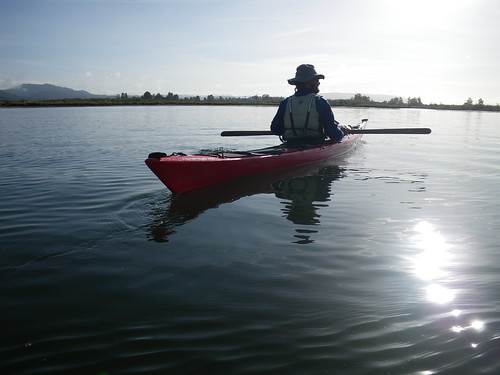
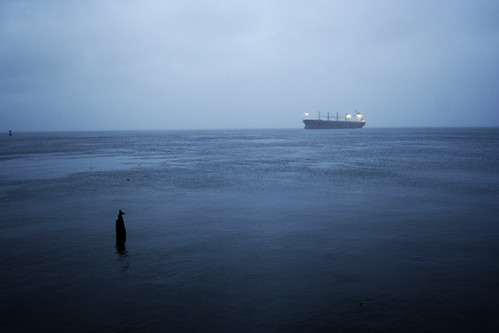
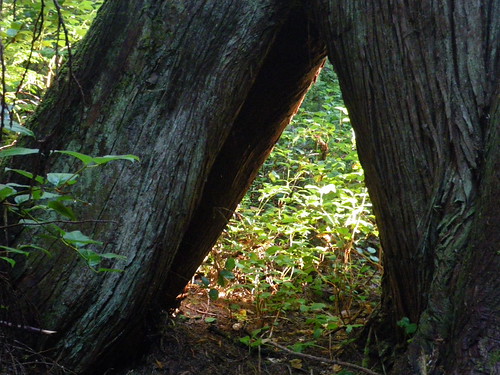
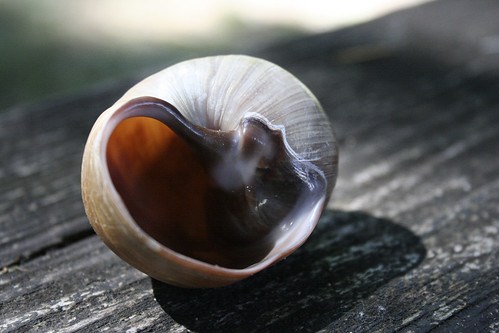
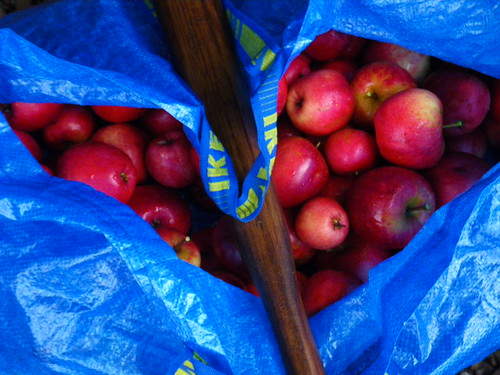
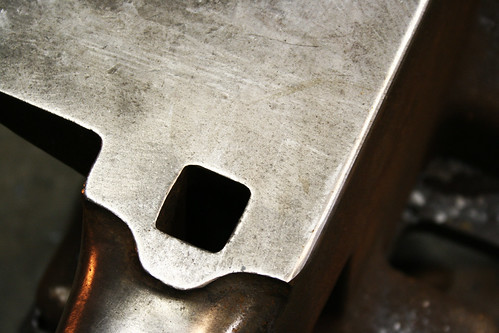
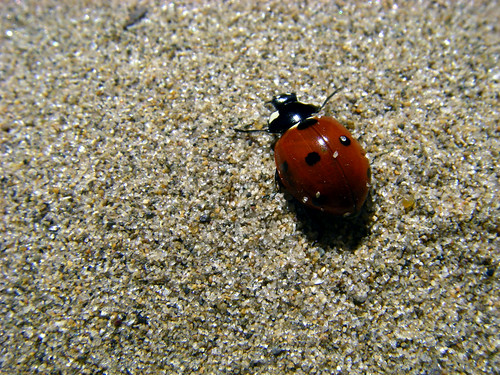
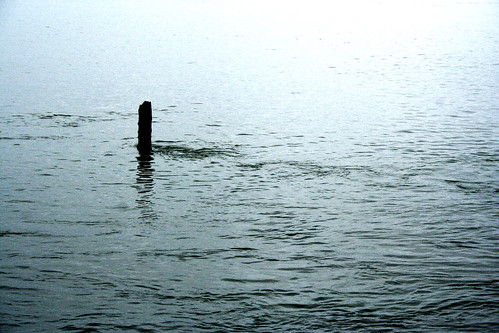

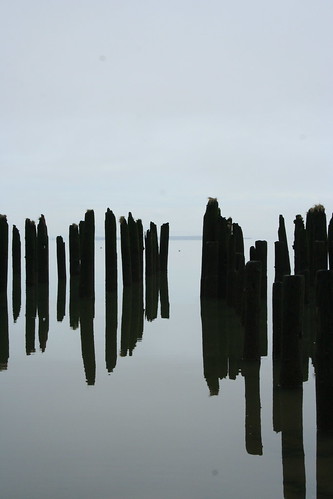
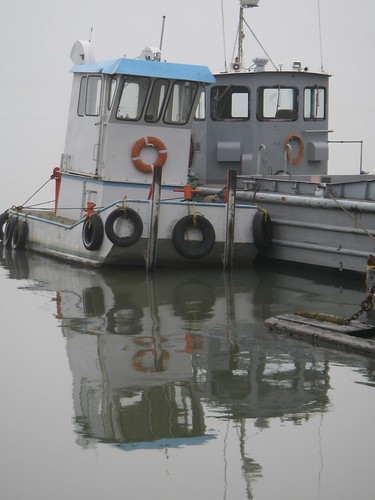


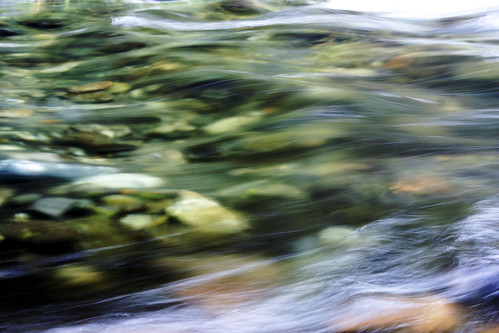
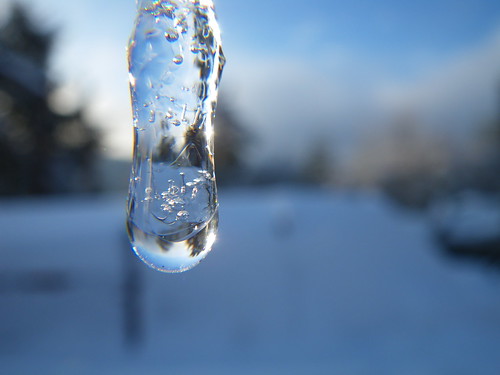
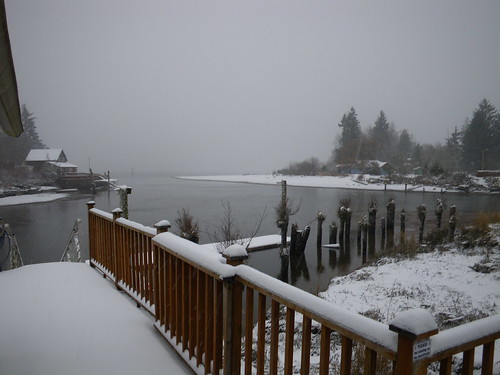


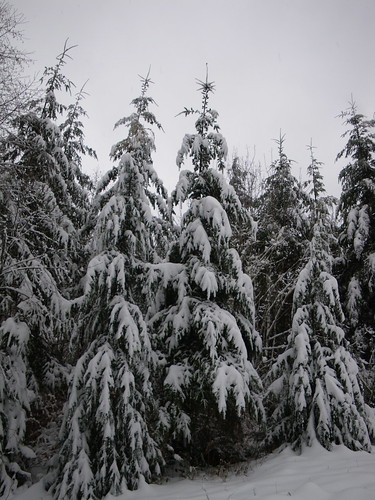
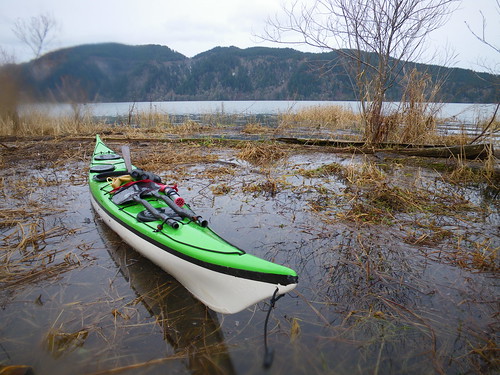
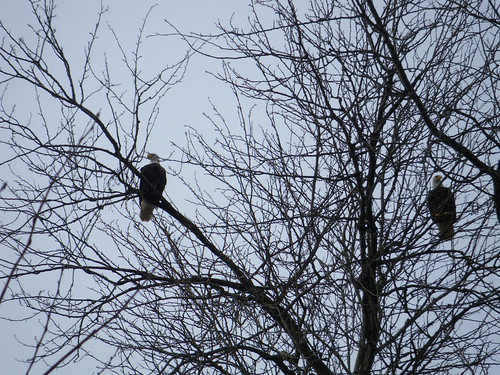
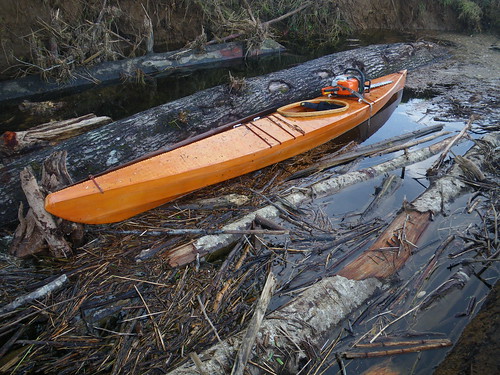

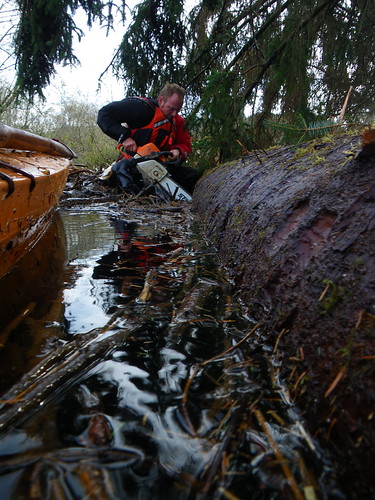
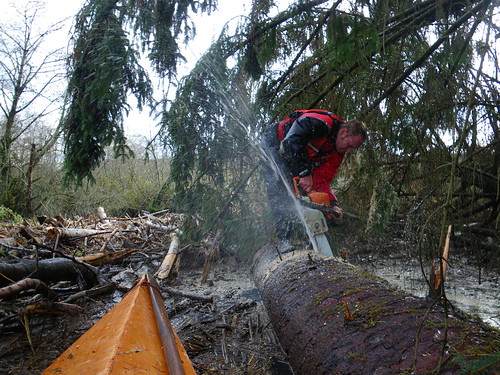
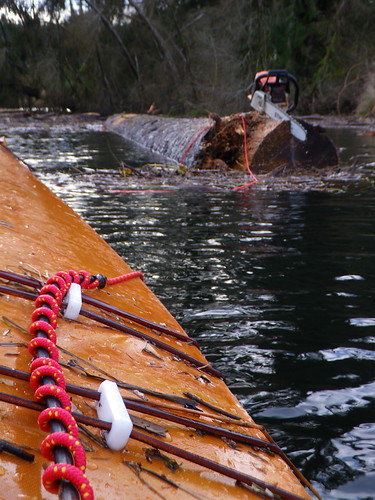

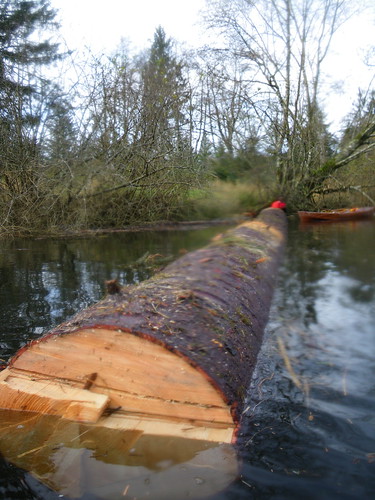
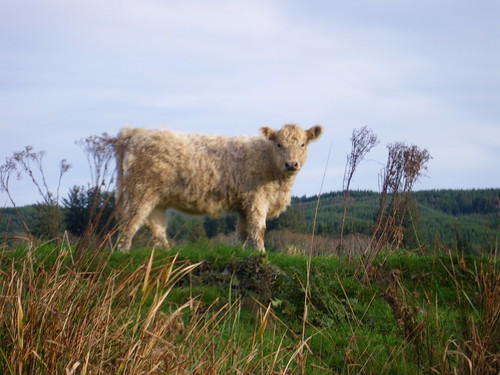


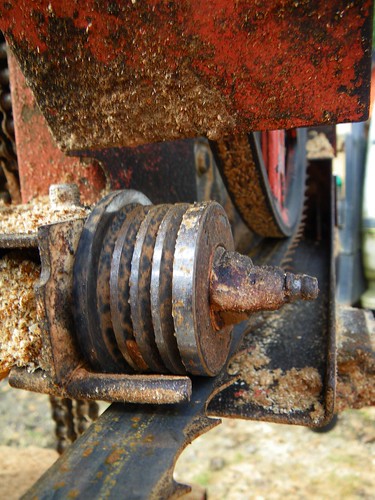

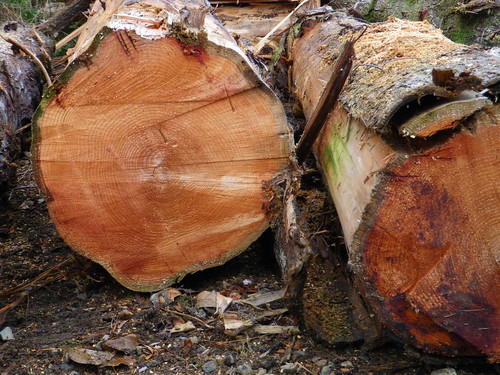

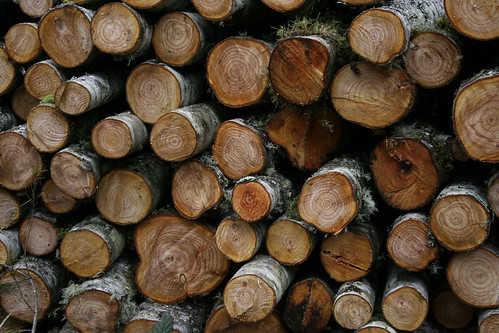
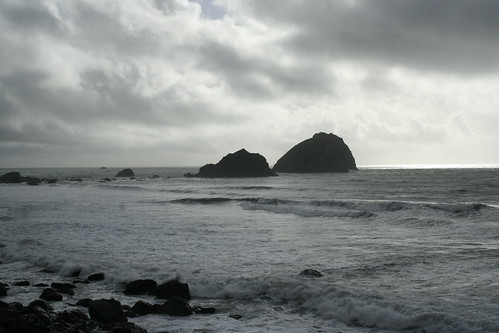
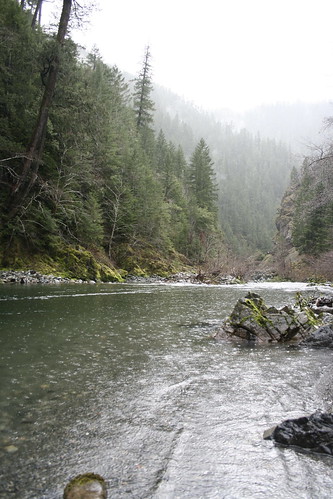

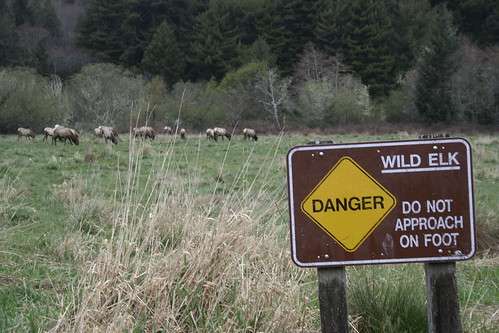
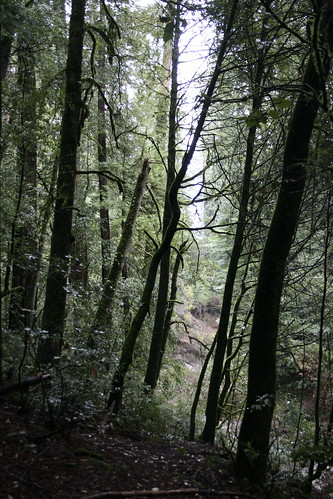
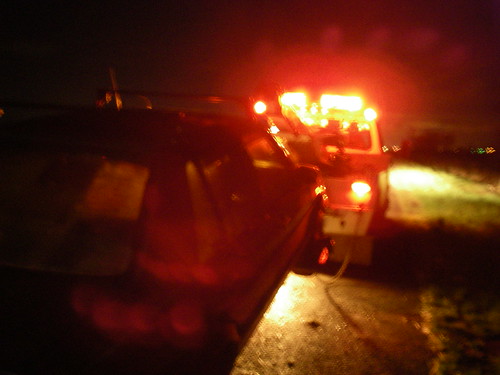

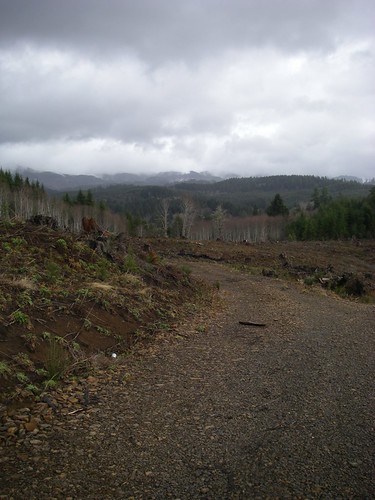
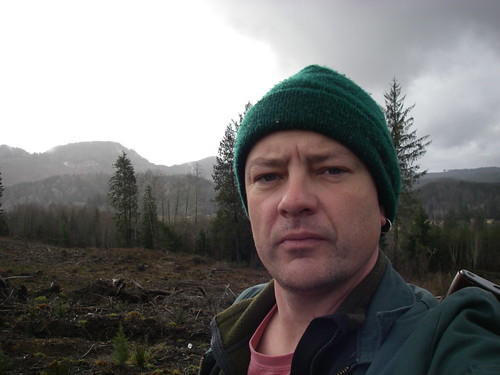
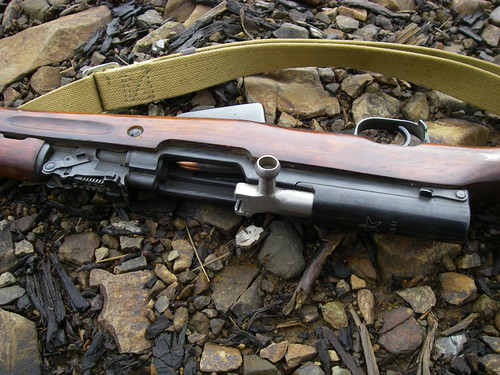

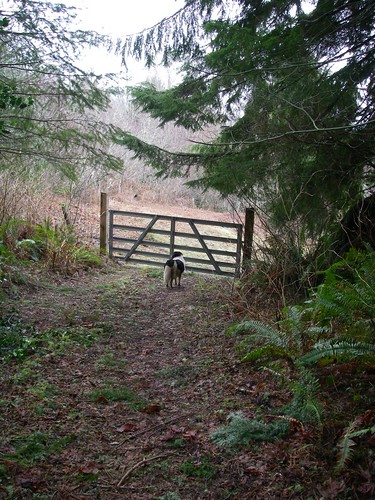
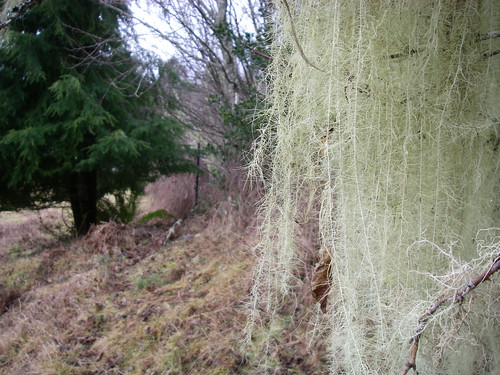

Recent Comments